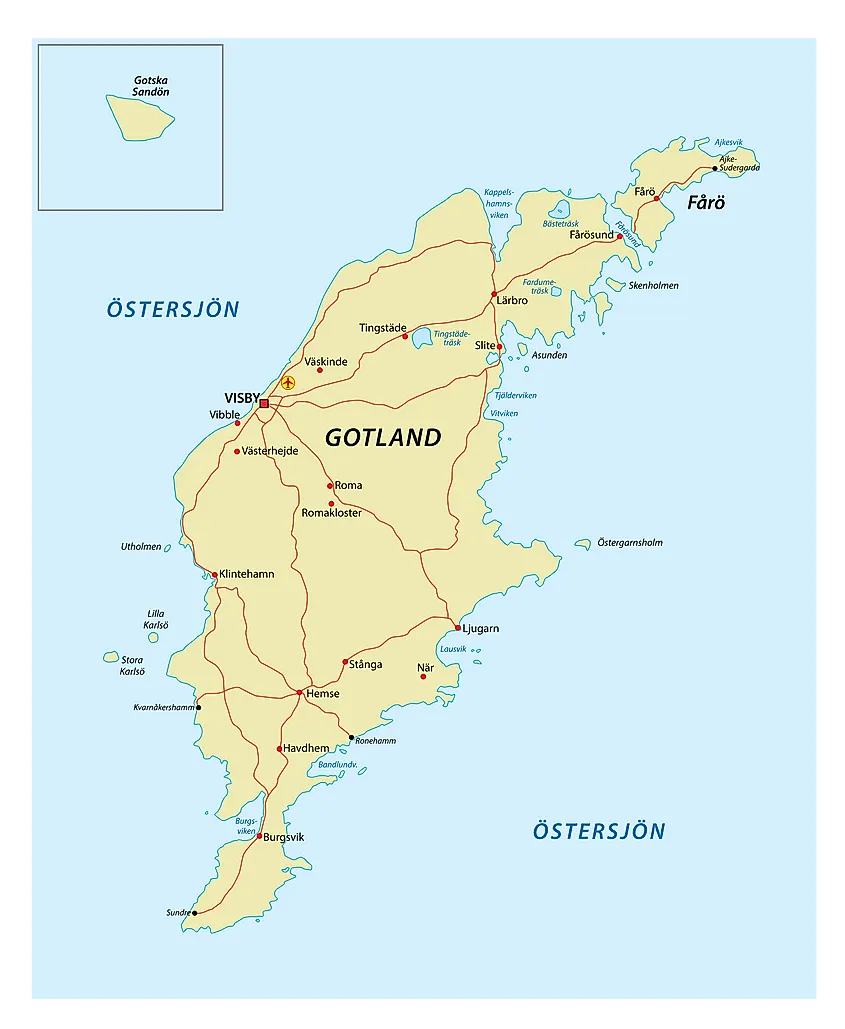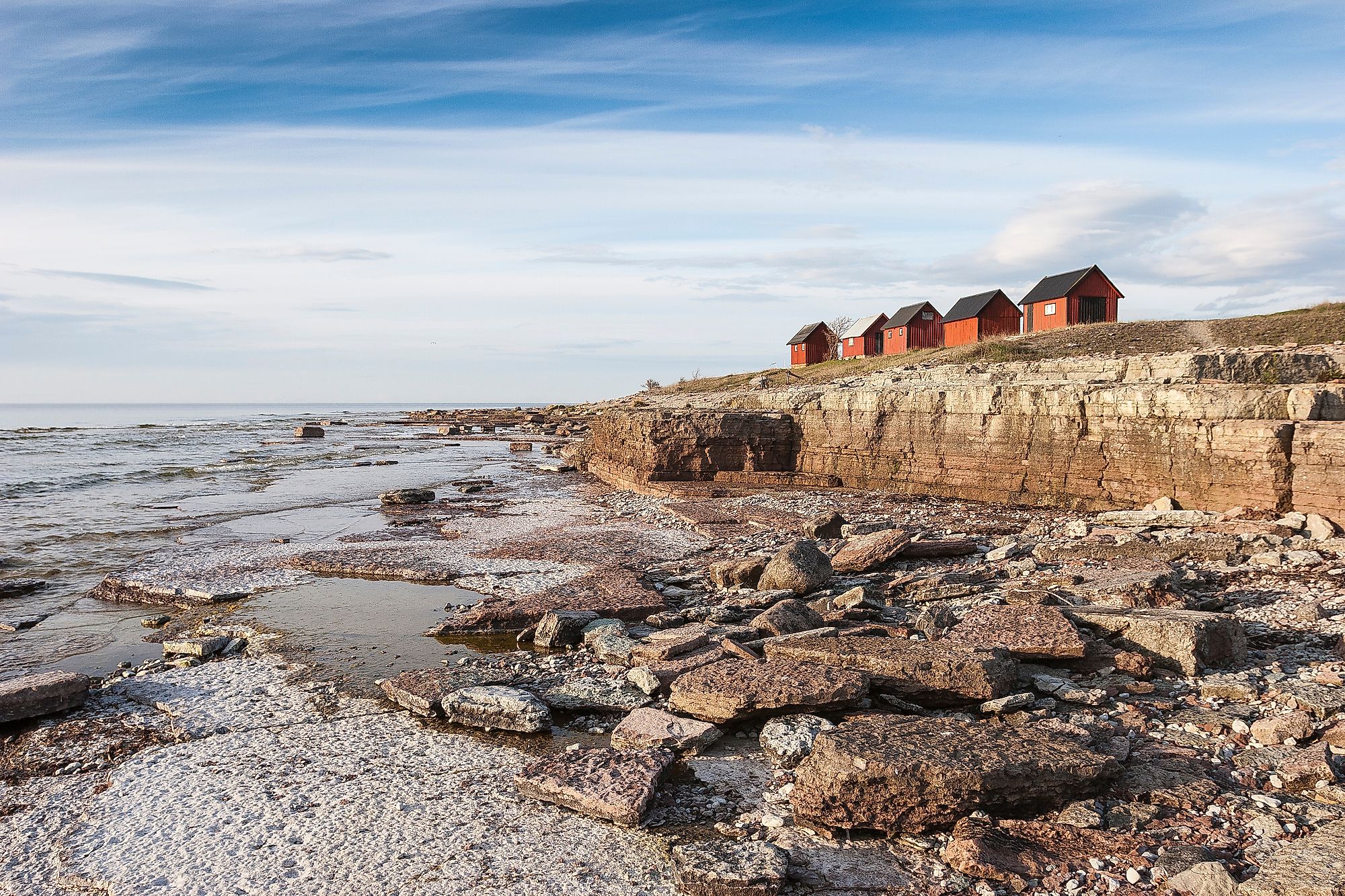
Gotland
Gotland is the largest island of the Baltic Sea located 60 miles off the coast of Sweden’s mainland. It is categorized as an island, province, dioceses, county, and municipality. The Island features wide bays that indent its low coastline and undulating plateaus of Silurian limestone. Bogs are present on the island particularly in places covered in clay and conifers grow on the steep cliffs in the West.
Location
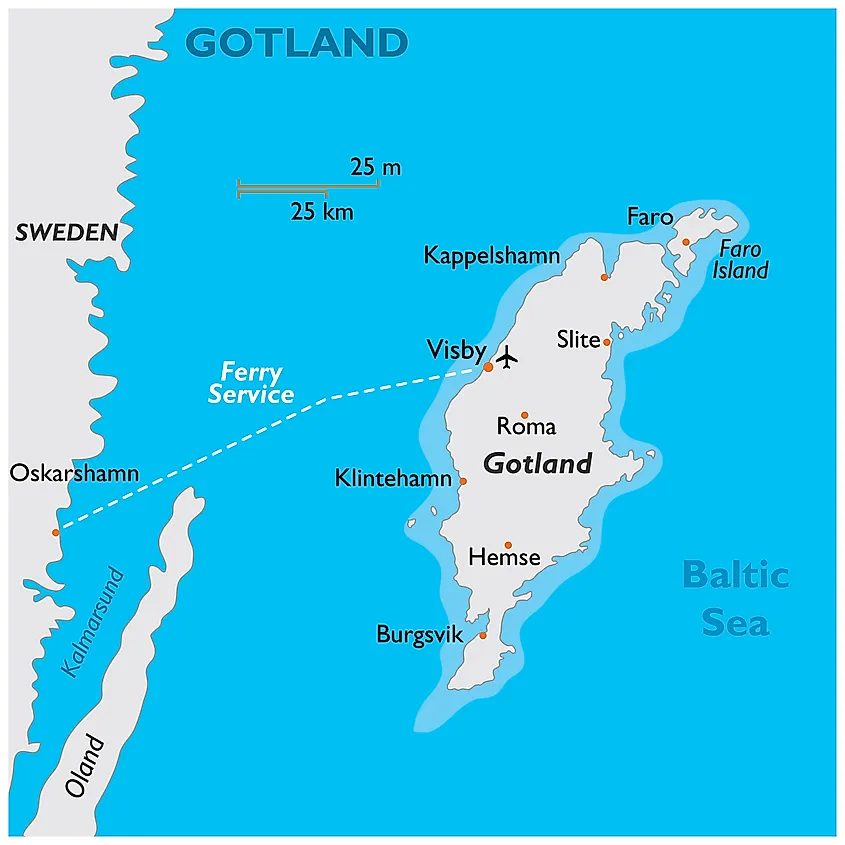
Gotland lies 56 miles east of the Swedish mainland and 81miles from the Baltic nations (Latvia, Lithuania, and Estonia). Although Gotland is the name given to the main island, the adjacent 14 islands are considered part of Gotland and its Gotlandic culture. As the largest Island, Gotland boasts the longest coastline of pristine sandy beaches covering 500 miles.
History
Gotland is a medieval county with most of its original elements preserved in the historic town of Visby. There is a 3440-Meter-long wall, which is considered the best curtain wall preserving the old town. The alleys around the town are lined with church and building ruins bearing Romanesque and Gothic architectural designs from as early as the 5th century. Its earliest inhabitants traded with people from the eastern and southern shores of the Baltic Sea. With the growth of trade across the region, they expanded the trade routes to include Rome and the Byzantines empires. By the 12th Century, the trade routes attracted the interest of Germans who established Visby and brought the Hanseatic League to protect their mutual trading interest with the indigenous and peasant Scandinavian community.
Human Settlements And Population
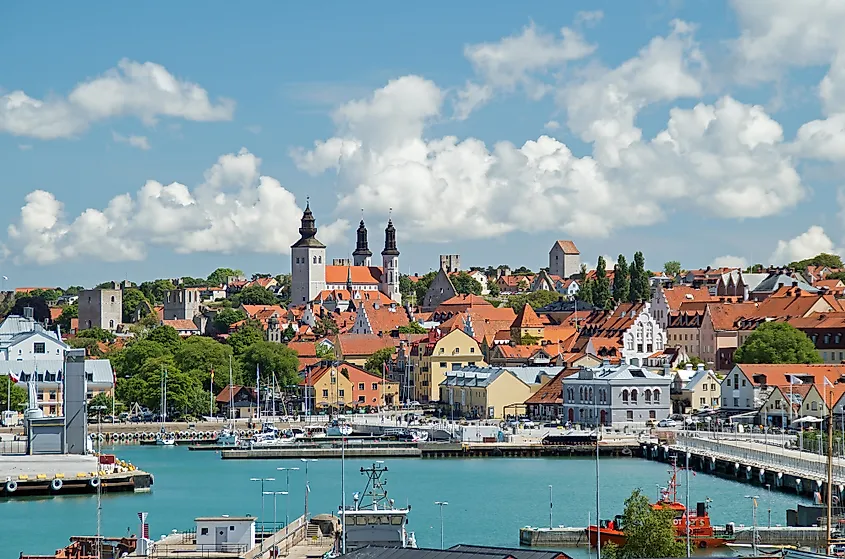
The Island is believed to have been inhabited since the prehistoric period based on a DNA study conducted on 5000-year-old skeletal remains. The remains show that the Middle Neolithic seal hunters who initially inhabited the island resemble modern-day Finns while the remains of a farmer from Gokhem Parish on the mainland showed resemblance to the modern-day Mediterranean.
Currently, Gotland has an average population of 58,003, 6.4% of which are foreigners. Nearly half of this population resides in the town of Visby. It is estimated that the average age of the population is 44.6 years with the life expectancy being 83.1 years for women and 79,9 years for men. With the expansion of Gotland’s economy, the population is expected o increase as more immigrants from Sweden and Finland settle in Visby.
Geography
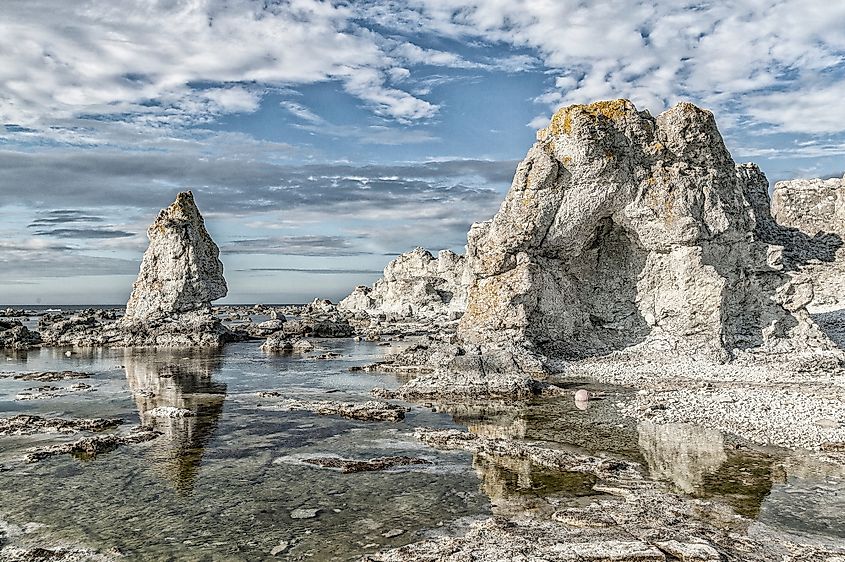
Gotland is the largest Island fully surrounded by the Baltic Sea. It covers a total area of 1,229.2 sq miles, which is 0.8% of Sweden’s total land area. As a province, Gotland also comprises smaller islands including Faro and Gotska Sandon to the north, Furillen to the north east, and Kariso to the West. There are several shallow freshwater lakes and rivers on the island with Lake Bästeträsk being the largest lake and Gothemsån being the longest river.
The mainland comprises a series of sedimentary rocks of the Silurian age and rich in limestone and shales. However, the growth of reefs in the sea has led to weathering of the lime rocks forming rauks rock formations.
Despite being surrounded by the sea, Gotland has a semi-continental marine climate, but with larger seasonal variances as compared to typical marine climates. This phenomenon is attributed to the strong continental winds that travel across the sea from the surrounding landmasses.
Wildlife
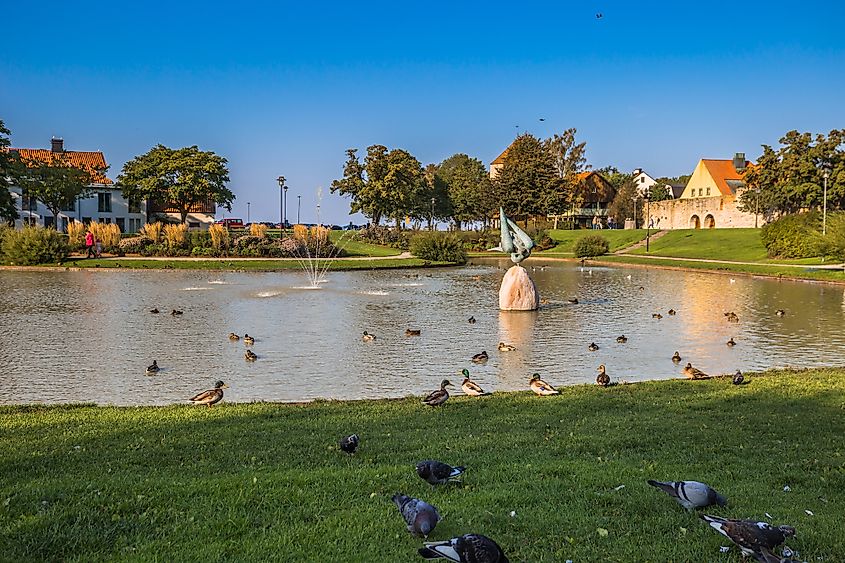
The special climatic conditions of Gotland created by the Baltic Sea give the island unique flora and fauna. The southern end of the island is green with deciduous forests and wooden meadows decorated bu ivy flowers, Gotsaka Sandon is the largest national park in Gotland with a total area of 14 square miles. It comprises sand dunes, beaches, and pine forests that are home to the large colonies of grey seals. Terrestrial mammals found here include mountain hares, hedgehogs, and bats. The Island is home to giant colonies of auks and thousand pairs of guillemots, cormorants, and razorbill birds. On the southern tip of Gotland is the Hoburg Shoal Bird Reserve designed to protect the indigenous Collared flycatcher species. Due to the importance of the tourism sector to Gotland and Sweden, nature reserves and habitat protection projects are on the rise in the island in an attempt to protect these habitats. Nearly 6% of the total land area is formally protected with nature reserves comprising of marine reserves taking up to 62,000 hectares of the sea.
Governance
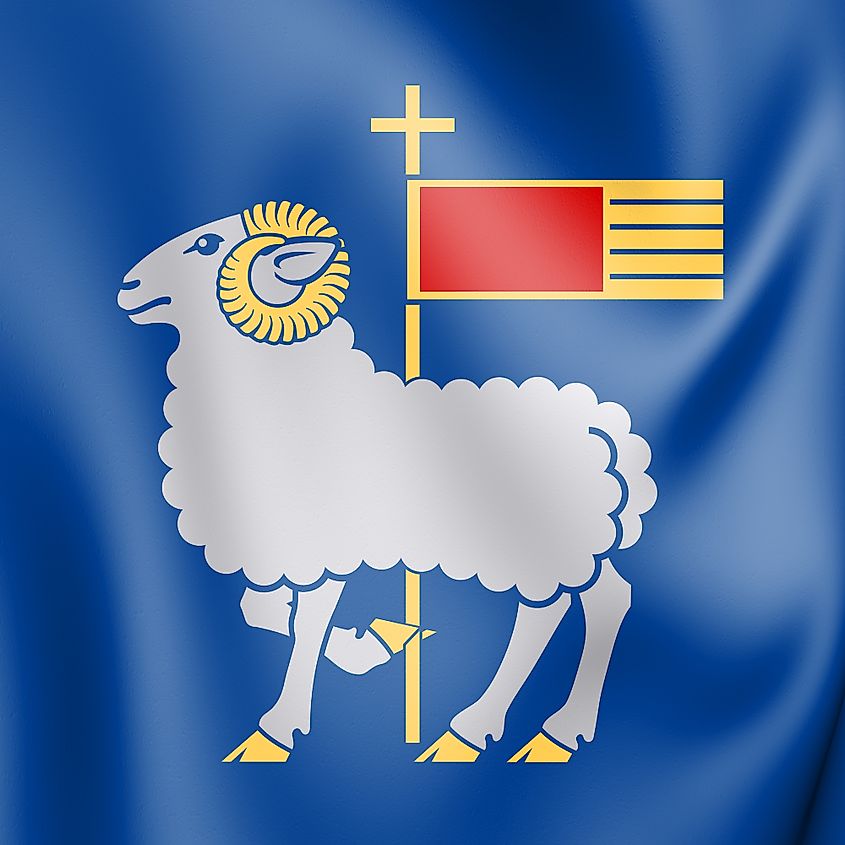
Since 900 Gotland, has been part of Sweden paying axes to the Swedish government for protection but it still remains an independent community with its own language and culture. Due to its insular position, Gotland is administered by both the Administrative County Board and the Region Gotland Municipality. The county board, headed by the governor, is responsible for implementing the goals of the national government while the municipality is tasked with social amenities including public health, public transport, and public education.
Gotland’s flag bears the Gotlandic coat of arms, which has a red background from the 13th century in the shape of the seal of the Gutnish Republic with the proud ram holding on a cross-staff bordered by five tails of a third. When the coat arms is shown with a royal crown, it represents the County Administrative Board. Visby is the main administrative center serving as the capital of the county as well as the seat of the municipality
Economy
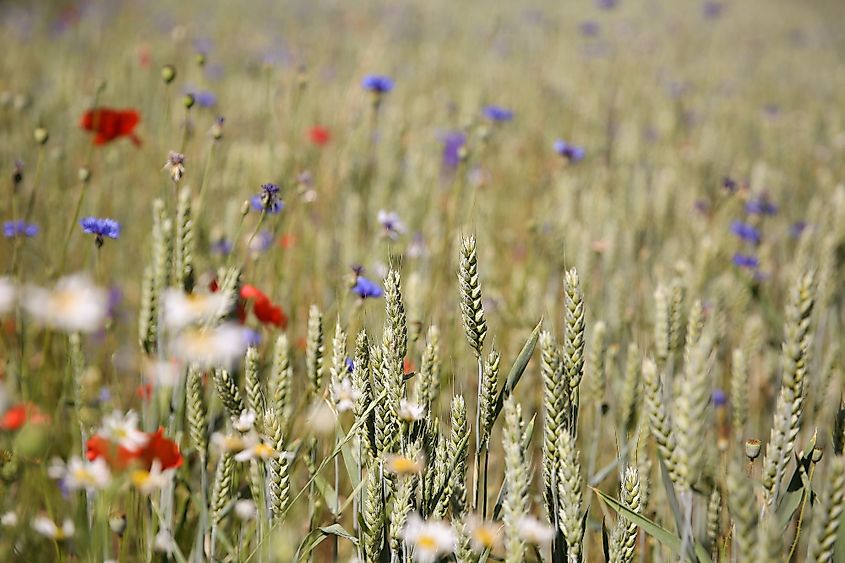
Gotland’s economy is mainly supported by small-scale agriculture, food processing, mining, and tourism. Primary agricultural production comprises grains, sugar beets, and flower cultivation as well as fishing. Herring and sprat continue to dominate fishing around Gotland during inter and spring. Livestock rearing continues to dominate the agricultural sector with milk production being the foundation of the industry. Oher key areas of production in most of the Gotland farms include beef, pork, poultry, and horses.
Tourism continues to play a fundamental role in supporting the service industry in Gotland. Over 2 million tourists visit the island by air, ferry, and cruise ships. Since the Island receives the most hours of sunlight during the year, commercial accommodation facilities are expanding, a sign that tourism will continue to support the economy in the future.

